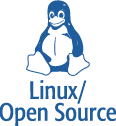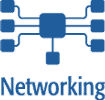
|
 TECHNICAL SESSIONS TECHNICAL SESSIONS
Complete Technical Sessions
By Day: Monday | Tuesday | Wednesday | Thursday | Friday
By Session: General Sessions | FREENIX | SIGs | Guru Is In | WiPs
Locations: See the complete technical sessions.
 |
|
Monday, June 28
|
|
8:45 a.m.–9:00 a.m.
|
Monday
|
|
Opening Remarks & Awards
Andrea Arpaci-Dusseau and Remzi Arpaci-Dusseau, University of Wisconsin, Madison
|
|
|
9:00 a.m.–10:00 a.m.
|
Monday
|
|
As a 20-year provider of proprietary software for the enterprise market, Novell has built products and a culture around proprietary (or closed) software. Within the last 18 months, we have embraced open source development and Linux and have injected them into our corporate DNA. While different, the two approaches are not mutually exclusive. In fact, I would argue embracing open source as a proprietary company is more straightforward than an open source company trying to move "up the stack." In this talk I will examine the myths, challenges, and opportunities for companies attempting to understand the best of both worlds.
Alan F. Nugent serves as chief technology officer of Novell. Prior to Novell, Alan was the Managing Partner, Technology, at Palladian Partners. Mr. Nugent has successfully led many different technology organizations. He serves on the Board of Directors and on the Technical Committee for the Object Management Group and is a widely respected writer and speaker on OT, BPR, and Information Management. He sits on the board of directors of several technology startup companies.
|
|
|
10:00 a.m.–10:30 a.m. Break
|
|
 |
|
10:30 a.m.–12:00 p.m.
|
Monday
|
GENERAL SESSION PAPERS
Instrumentation and Debugging
Session Chair: Val Henson, Sun Microsystems
|
 |
Making the "Box" Transparent: System Call Performance as a First-Class Result
Yaoping Ruan and Vivek Pai, Princeton University
Dynamic Instrumentation of Production Systems
Bryan M. Cantrill, Michael W. Shapiro, and Adam H. Leventhal, Sun Microsystems
Flashback: A Lightweight Extension for Rollback and Deterministic Replay for Software Debugging
Sudarshan M. Srinivasan, Srikanth Kandula, Christopher R. Andrews,
and Yuanyuan Zhou, University of Illinois, Urbana-Champaign
|
|
SIG SESSIONS
Advanced System Administration SIG
| Session: Automating System and Storage Configuration |
 |
CHAMPS: A Schedule-Optimized Change Management System
Alex Keller, IBM T.J. Watson Research Center
IBM's CHAnge Management with Planning and Scheduling (CHAMPS) system gleans and exploits detailed structural knowledge about software dependencies in a distributed system. CHAMPS' ability to gather and optimize such information according to administrator-defined objectives, available resources in server pools, and financial constraints enables high-quality optimized solutions for quick and reliable software provisioning tasks, such as installations and updates.
Autonomics in System Configuration
Paul Anderson, University of Edinburgh
A computing installation is created from a collection of bare
hardware and a repository of software. These same components may
be used to build "fabrics" with very different objectives, from a
GRID computing cluster to a network of desktop workstations. We use
the term "system configuration" for the task of turning these raw
components into an integrated system that satisfies the given
objectives. However, we also want to maintain these objectives in
the face of changing requirements and external influences. To do
this, a system needs to be able to adapt autonomically. This talk
discusses some of the problems of specifying and implementing
configurations in an autonomic environment.
|
GURU SESSIONS
Embedded Linux
Bart Massey, Portland State University
|
 |
 |
Bart is the faculty advisor to the Portland State Aerospace
Society (PSAS). PSAS has been using
Linux as the embedded OS for launch control, flight
sequencing, and in-flight telemetry in the extremely
unforgiving environment of their 12-foot-high supersonic
rocket. Bart has also been involved with the efforts of
Keith Packard and Carl Worth in developing the Linux/X
infrastructure for embedded devices in conjunction with the
handhelds.org project.
The session will be fun-filled and informative for embedded
Linux novices and experts alike. Session focus will be on
cost-effective, practical Linux solutions for a variety of
embedded environments.
|
 |
|
12:00 p.m.–1:30 p.m. Lunch (on your own)
|
|
 |
|
1:30 p.m.–3:00 p.m.
|
Monday
|
GENERAL SESSION PAPERS
Swimming in a Sea of Data
Session Chair: Yuanyuan Zhou, UIUC
|
 |
Email Prioritization: Reducing Delays on Legitimate Mail Caused by Junk Mail
Dan Twining, Matthew M. Williamson, Miranda J. F. Mowbray, and Maher Rahmouni, Hewlett-Packard Labs
Redundancy Elimination Within Large Collections of Files
Purushottam Kulkarni, University of Massachusetts; Fred Douglis, Jason
LaVoie, and John M. Tracey, IBM T.J. Watson
Alternatives for Detecting
Redundancy in Storage Systems Data
Calicrates Policroniades and Ian Pratt, Cambridge University |
|
SIG SESSIONS
Advanced System Administration SIG
| Session: System Administration: The Big Picture |
 |
The Technical Big Picture
Alva Couch, Tufts University
Network and system administration are still considered bottom-up
processes: integrating disparate hardware and software into a
usable computing infrastructure, building a pyramid of capabilities
and services upon a foundation of reliable core systems. By contrast,
the true goal of network and system administration is to support a
particular top-down mission or pattern of use, by expressing
organizational goals as subgoals in an upside-down pyramid of needs.
Looking at the profession from a top-down perspective leads to new
metrics for the profession, some surprising and controversial
conclusions, and several interesting questions for the future.
The Human Big Picture
Tom Limoncelli, Independent Consultant
Imagine rolling out a security patch, a new application, or a new
operating system to 40,000 PCs—it's 65% communication, 25% technical
work, and 10% ego management. System administration on a large scale
becomes a study of human relationships: managing large teams of people
on a project, managing expectations and resources with upper
management, and coordinating with a user base. Psychology and public
relations become just as important as technical prowess. Why aren't
those skills taught to CS majors?
|
GURU SESSIONS
Session TBA
|
 |
 |
|
 |
|
3:00 p.m.–3:30 p.m. Break
|
|
 |
|
3:30 p.m.–5:00 p.m.
|
Monday
|
GENERAL SESSION PAPERS
Network Performance
Session Chair: Carl Staelin, HP Labs
|
 |
 |
Monkey See, Monkey Do: A Tool for TCP Tracing and Replaying
Yu-Chung Cheng, University of California, San Diego; Urs Hölzle and Neal Cardwell, Google; Stefan
Savage and Geoffrey M. Voelker, University of California, San Diego
A Transport Layer Approach for Improving End-to-End Performance and Robustness Using Redundant Paths
Ming Zhang and Junwen Lai, Princeton University; Arvind
Krishnamurthy, Yale University; Larry Peterson and Randolph Wang, Princeton University
Multihoming Performance Benefits: An Experimental Evaluation of Practical Enterprise Strategies
Aditya Akella and Srinivasan Seshan, Carnegie Mellon University; Anees Shaikh, IBM T.J. Watson
|
|
SIG SESSIONS
Advanced System Administration SIG
| Session: Large Storage |
 |
Autonomic Policy-based Storage Management
Kaladhar Voruganti, IBM Almaden Research
The cost of managing ever-growing storage is now a dominant IT
expense. Storage administration complexity is growing, and the
amount of storage a single administrator can manage is not
growing as quickly as a site's storage capacity. We present a new approach: autonomic policy-based storage management.
This approach dramatically increases administrative leverage by
moving storage admin to software that understands high-level policy
goals with respect to performance, availability, security, and
backup/restore. The talk discusses the architecture, algorithms, and
implementation details of a policy-enabled storage-network planner—a key component of the overall policy-based storage management
solution.
Experiences with Large Storage Environments
Andrew Hume, AT&T Research
I have worked with various aspects of the recording and billing
systems for a large telecommunications company for the last several
years. We process feeds from various UNIX, MVS (Cobol and PL/1),
and AS/400 systems, to the tune of 4000 files comprising 300–700GB
of new data per day. This data streams into several PC clusters,
where it is chewed on, compressed, added to databases, and copied
onto tape. This is not trivial to do. Sure, we have about 50TB of
disk, but that doesn't go as far as it used to. Managing the space
is harder than it ought to be; annually managing 2–3 million files
and their life cycles is awkward, as is controlling the processing
of these files. This talk will discuss these and other challenges
in both hardware and operating system choices and will discuss solutions
we've found.
|
|

|


